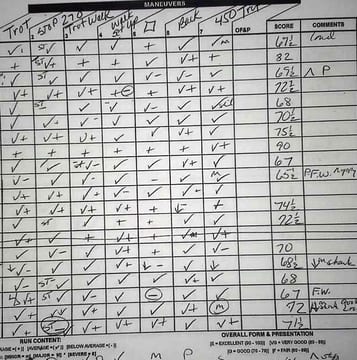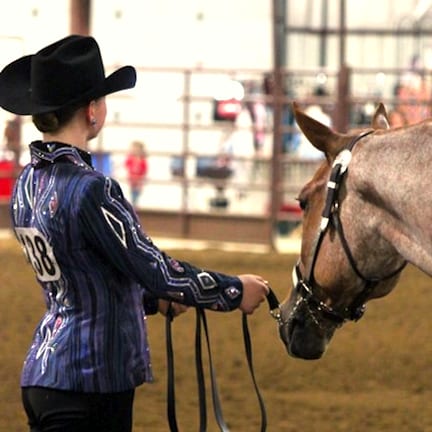Over the past few years, the majority of AQHA judges have been using the new pattern score sheets for the showmanship, horsemanship, and equitation. However, there has been a reluctance and resistance by some judges to use these sheets due to their personal preference of how they have routinely score these classes in the past.
Despite the resistance, starting in 2014, AQHA started requiring all judges use them and turn them into show management to be posted. According to some judges, they find it difficult to watch the patterns all the way through and score each maneuver without the assistance of a scribe. At this point in time, many shows do not have the man power to have scribes for every class and every judge. Also, many scribes have not learned how to score these classes leaving judges to juggle trying to watch the class and scribe at the same time.
Due to the short time period judges have in scoring the patterns, some judges’ score sheets can be illegible and hard to understand. In short, judges are still learning how to use this scoring system. Currently, some judges don’t use the OF&P (Overall Form and Presence score) boxes, and there is discussion to add a section for the railwork.
We asked exhibitors, including an AQHA judge, whether they feel the score sheets are helpful. We also asked them to provide feedback on how to make the score sheets better. Check out their comments below!
 Tiina Volmer–That is a fantastic question and that’s so funny you ask this. There have been a few of us at the last shows who have discussed the score sheets. We think the score sheets are a great idea but they need to be taken to another level. We have seen several times that a lower score will beat a higher score…? It is a great idea to have the judges accountable for their decisions. The maneuvers could be scored like trail and then have an overall appearance score instead of just plus and check. I think the score sheets can be used as a learning tool as well. When you hare done a pattern, you have an idea of what you plused and what you didn’t, it’s nice to see the judges saw the same thing you felt during the pattern. It is great when the judges put down comments, another great teaching tool. The score sheets are a fantastic idea that need to change to make it easier for the judges and the riders.
Tiina Volmer–That is a fantastic question and that’s so funny you ask this. There have been a few of us at the last shows who have discussed the score sheets. We think the score sheets are a great idea but they need to be taken to another level. We have seen several times that a lower score will beat a higher score…? It is a great idea to have the judges accountable for their decisions. The maneuvers could be scored like trail and then have an overall appearance score instead of just plus and check. I think the score sheets can be used as a learning tool as well. When you hare done a pattern, you have an idea of what you plused and what you didn’t, it’s nice to see the judges saw the same thing you felt during the pattern. It is great when the judges put down comments, another great teaching tool. The score sheets are a fantastic idea that need to change to make it easier for the judges and the riders.
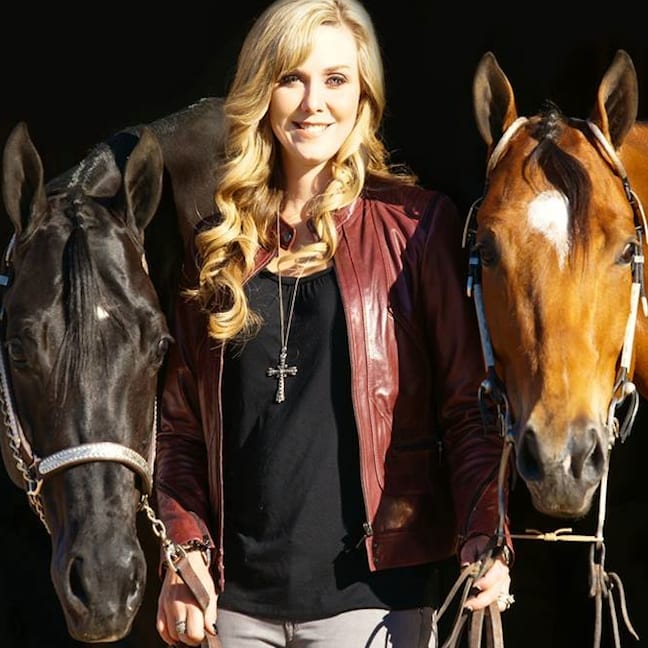 Larisa Affeldt–I
Larisa Affeldt–I
do look at them regularly every show, and I do think they can be
helpful, however, sometimes they are confusing. I am hoping that in the
next few years they (judges) can get a good idea about how to score and
write their thoughts quickly and legibly. It can be such a helpful tool.
Right now, I think they are so new to it that I am hoping with time
they all become a great tool for us to use. Sometimes, I look at them
and they are helpful and clear and other times they can be hard to
understand. I do like it and I think we are headed in the right
direction.
 Brad Jewett–It doesn’t matter what we have as a format to record our thoughts on if we don’t understand proper horsemanship, showmanship, or equitation skill sets. As a judge, I would like to score off the 70 as average score system. I think it is what we are all trained as exhibitors to look at and decipher. As a trainer/coach I never have gone in and looked at pattern class score sheets to help gain any knowledge for my client. It is very hard to understand what a check and check minus means by each individual. It is difficult to explain why my novice gets a VG (Very Good) as their OA&P (Overall Form and Presence score) and my World Champion Horsemanship rider receives the same VG. That’s a little hard to explain to my clients.
Brad Jewett–It doesn’t matter what we have as a format to record our thoughts on if we don’t understand proper horsemanship, showmanship, or equitation skill sets. As a judge, I would like to score off the 70 as average score system. I think it is what we are all trained as exhibitors to look at and decipher. As a trainer/coach I never have gone in and looked at pattern class score sheets to help gain any knowledge for my client. It is very hard to understand what a check and check minus means by each individual. It is difficult to explain why my novice gets a VG (Very Good) as their OA&P (Overall Form and Presence score) and my World Champion Horsemanship rider receives the same VG. That’s a little hard to explain to my clients.
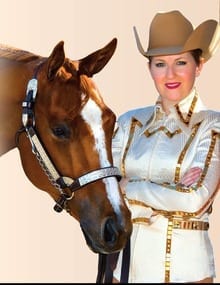 Beckie Peskin–For the most part I have found them frustrating. I have seen situations where there are identical marks (number of checks, check pluses, etc), but the scores of the two riders are as much as 10-12 points different. If they want to add value, score it by maneuver – like the trail, reining, etc. All this did was give judges extra work that in the end adds no more clarity to placing and really hasn’t removed the subjectivity. I had high hopes, but it’s a half-way fix that just doesn’t work for any parties involved, in my opinion. I do go look at them regularly as do some others I’ve spoken to and every competitor I’ve spoken to is frustrated as well.
Beckie Peskin–For the most part I have found them frustrating. I have seen situations where there are identical marks (number of checks, check pluses, etc), but the scores of the two riders are as much as 10-12 points different. If they want to add value, score it by maneuver – like the trail, reining, etc. All this did was give judges extra work that in the end adds no more clarity to placing and really hasn’t removed the subjectivity. I had high hopes, but it’s a half-way fix that just doesn’t work for any parties involved, in my opinion. I do go look at them regularly as do some others I’ve spoken to and every competitor I’ve spoken to is frustrated as well.
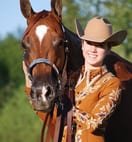 Charlotte Selby–I think they are incredibly helpful. I look at them at every show after all of my classes. I think it’s extremely beneficial to be able to go and see exactly where you lost or gained points so while practicing we can work on specific areas. I like to take pictures of them; it really helps me to remember what I specifically need to work on because we see so many cards and it’s really hard to remember. My trainers, Mike and May Edwards, are really good about telling us what we need to work on and helping, but it’s also nice to have it written down and very detailed, especially from the judge’s perspective.
Charlotte Selby–I think they are incredibly helpful. I look at them at every show after all of my classes. I think it’s extremely beneficial to be able to go and see exactly where you lost or gained points so while practicing we can work on specific areas. I like to take pictures of them; it really helps me to remember what I specifically need to work on because we see so many cards and it’s really hard to remember. My trainers, Mike and May Edwards, are really good about telling us what we need to work on and helping, but it’s also nice to have it written down and very detailed, especially from the judge’s perspective.
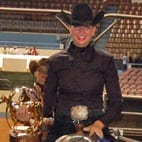 Carey Nowacek–I really do like the idea of the score sheets, but not necessarily the way they are written. To me, the check marks and then the score at the end doesn’t make much sense to me, and I am constantly having to have Brad (Jewett) explain what my scoresheet meant. Sometimes, I may have two completely different scores on each judge, yet, be placed the same under both; so that also makes it a little confusing. Also, the base line where your categorized may be discouraging to some riders. In the NCEA we used score sheets similar to the western riding and trail, where each maneuver for a specific score and the base score started at a 70. We studied our score sheets up against our videos every competition and we could see exactly what the judge faulted us on and it was very helpful. I always go look at my scoresheets to see where I can improve.
Carey Nowacek–I really do like the idea of the score sheets, but not necessarily the way they are written. To me, the check marks and then the score at the end doesn’t make much sense to me, and I am constantly having to have Brad (Jewett) explain what my scoresheet meant. Sometimes, I may have two completely different scores on each judge, yet, be placed the same under both; so that also makes it a little confusing. Also, the base line where your categorized may be discouraging to some riders. In the NCEA we used score sheets similar to the western riding and trail, where each maneuver for a specific score and the base score started at a 70. We studied our score sheets up against our videos every competition and we could see exactly what the judge faulted us on and it was very helpful. I always go look at my scoresheets to see where I can improve.
 Jason Wanderer–As an exhibitor, I always crave feedback on my performance (both positive and negative) and I have found the score sheets provide that feedback. There has always been the mystery of “What did the judge think of my ride?” and the score sheets provide a greater insight into that opinion beyond just the placings. I always review my score sheets and find the “comments section” particularly helpful as a tool for improvement. Ideally, I would like to see some form of written feedback incorporated into the halter classes as well, perhaps listing conformational and conditioning criteria/faults and ranking them 1-3. Showing horses is about paying for someone’s opinion and the more I can learn about that opinion–I find both helpful and gratifying.
Jason Wanderer–As an exhibitor, I always crave feedback on my performance (both positive and negative) and I have found the score sheets provide that feedback. There has always been the mystery of “What did the judge think of my ride?” and the score sheets provide a greater insight into that opinion beyond just the placings. I always review my score sheets and find the “comments section” particularly helpful as a tool for improvement. Ideally, I would like to see some form of written feedback incorporated into the halter classes as well, perhaps listing conformational and conditioning criteria/faults and ranking them 1-3. Showing horses is about paying for someone’s opinion and the more I can learn about that opinion–I find both helpful and gratifying.
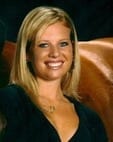 Ashley Hadlock–I personally love being able to see the score sheets. I find it very interesting seeing the judges perspective on the areas I felt were weak. In addition, it’s a great feeling seeing how I was rewarded for the stronger points. It provides an idea of the areas I need to spend more time on to help overall improve. I go to the office and look at the sheets at the end of each day while my pattern is still fresh on my mind. I feel one way to make the sheets more beneficial to the exhibitors is for the judges to make notes in the note area. I understand they don’t have a lot of time to spend writing but putting ‘fingers’ or ‘late on maker’ can give more insight of how the score came about.
Ashley Hadlock–I personally love being able to see the score sheets. I find it very interesting seeing the judges perspective on the areas I felt were weak. In addition, it’s a great feeling seeing how I was rewarded for the stronger points. It provides an idea of the areas I need to spend more time on to help overall improve. I go to the office and look at the sheets at the end of each day while my pattern is still fresh on my mind. I feel one way to make the sheets more beneficial to the exhibitors is for the judges to make notes in the note area. I understand they don’t have a lot of time to spend writing but putting ‘fingers’ or ‘late on maker’ can give more insight of how the score came about.
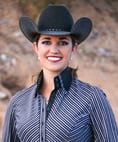 Lauren Crivelli–I think the pattern score sheets are extremely helpful for the main reason that it allows you to evaluate your performance and improve upon it. There could be more clarification as to what each mark means, but you can still look at the marks on your maneuvers relative to the winner’s maneuvers. I look at them after every class and review the judges remarks with my video to see where improvements can take place. The score sheet is a great way to reward each individual element of the rider’s pattern.
Lauren Crivelli–I think the pattern score sheets are extremely helpful for the main reason that it allows you to evaluate your performance and improve upon it. There could be more clarification as to what each mark means, but you can still look at the marks on your maneuvers relative to the winner’s maneuvers. I look at them after every class and review the judges remarks with my video to see where improvements can take place. The score sheet is a great way to reward each individual element of the rider’s pattern.
 Brister Shum–I always look at my score sheets. Usually, I have a pretty good idea of what it’s going to look like. By checking it, I can see which maneuvers judges plused and which ones I can improve on. The biggest thing I learned about the score sheet method is to always keep showing. If you minus one maneuver, try to plus the next ones, because it’s your overall score that counts.
Brister Shum–I always look at my score sheets. Usually, I have a pretty good idea of what it’s going to look like. By checking it, I can see which maneuvers judges plused and which ones I can improve on. The biggest thing I learned about the score sheet method is to always keep showing. If you minus one maneuver, try to plus the next ones, because it’s your overall score that counts.
 Lexi Kim–I personally love the score sheets. I think they are honestly so helpful and look forward to seeing what judge liked and did not like in my performance. I really enjoy how the judges post them because it gives me the opportunity to review my pattern and look at what I excelled at and what I need to work harder on. My only suggestion would be that I wish the judges would put a little more notes sometimes because sometimes I look at the scoresheets and don’t understand why I got deducted so hard, so more notes would be great. I go look at them every time they are posted.
Lexi Kim–I personally love the score sheets. I think they are honestly so helpful and look forward to seeing what judge liked and did not like in my performance. I really enjoy how the judges post them because it gives me the opportunity to review my pattern and look at what I excelled at and what I need to work harder on. My only suggestion would be that I wish the judges would put a little more notes sometimes because sometimes I look at the scoresheets and don’t understand why I got deducted so hard, so more notes would be great. I go look at them every time they are posted.
 Kari Grefsrud–I regularly go look at them especially when I feel that I had a nice consistent pattern. Some judges overall seem to score higher than others; such as an example, the same horsemanship pattern run would score both a 92 and 78 with it being the highest or second highest on each card. So a more clear definition would be helpful for exhibitors or the realization that there will be huge differences in scores. I do overall find it very helpful and I am glad that they now require the release of the score sheets to exhibitors.
Kari Grefsrud–I regularly go look at them especially when I feel that I had a nice consistent pattern. Some judges overall seem to score higher than others; such as an example, the same horsemanship pattern run would score both a 92 and 78 with it being the highest or second highest on each card. So a more clear definition would be helpful for exhibitors or the realization that there will be huge differences in scores. I do overall find it very helpful and I am glad that they now require the release of the score sheets to exhibitors.
 Meg DePalma–I think the scoresheets are very helpful. Unlike a standardized test, when it’s easy to see whether you’re right or wrong; the pattern scores are judged a lot on preferences. To be able to see what each is thinking and “weighing” a maneuver it helps to understand a given score. I do wish the judges would be more clear on the comments knowing we will be reading them. At one show, I had to grab a judge as he walked by to help me “decode” the showmanship sheets.
Meg DePalma–I think the scoresheets are very helpful. Unlike a standardized test, when it’s easy to see whether you’re right or wrong; the pattern scores are judged a lot on preferences. To be able to see what each is thinking and “weighing” a maneuver it helps to understand a given score. I do wish the judges would be more clear on the comments knowing we will be reading them. At one show, I had to grab a judge as he walked by to help me “decode” the showmanship sheets.
What do you think about the patterns score sheets? What suggestions do you have to make them better and easier to understand? We want to know! Please comment on our Facebook page or in the comments section of the article. Here is a copy of the current score sheet that AQHA judge Stephanie Lynn was kind enough to let us show our readers.
